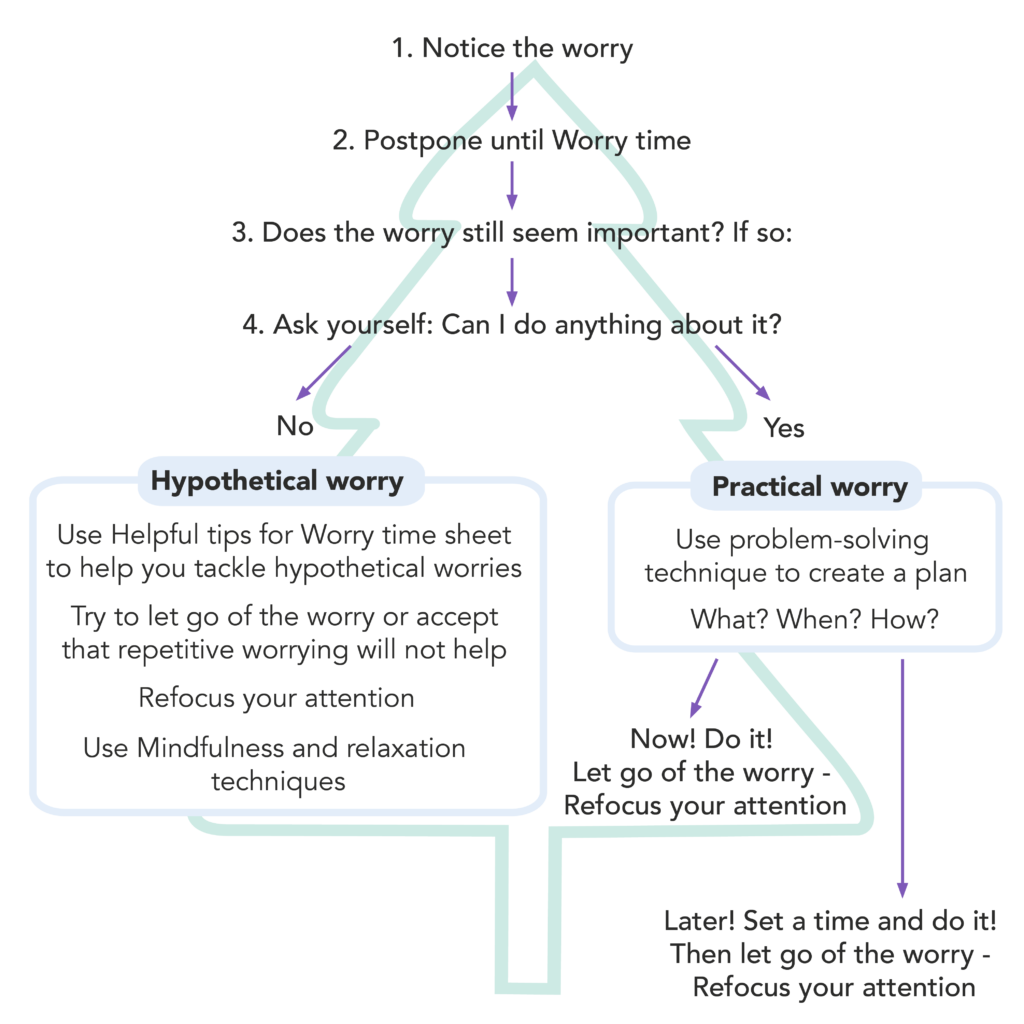MindWell self-help activity
You will need to print off worksheets or download them to a computer or laptop to complete this activity.
One way of taking control of worrying is to start monitoring your worries during the day and actually create a daily Worry time in order to try and tackle them.
Set aside a time each day for Worry time (about 15 minutes). Find a time that works best for you. Some people who worry a lot at night can find it helpful to have Worry time in the morning, for example. This means they can delay their worrying until the morning which can help them get to sleep. Other people find a time in the evening is ideal.
When you find yourself worrying during the day you can use the Worry time list sheet to make a record of any worries (or record them on your phone if you prefer). After making a note of each worry delay them until Worry time and remember to re-focus your thoughts back to the present moment.
Worry time list worksheet
You can use the Worry tree diagram to decide whether your worries are anxious thoughts that you need to let go of or practical problems which need to be tackled.

Read description of Worry tree diagram
Download this diagram as a pdf:
The Worry tree
During Worry time you can work through the anxious thoughts you have recorded in your Worry time list. You may find that some worries have gone away or don’t seem so important now.
You can use this list of Helpful tips for worry time sheet to work through and challenge any anxious thoughts.
Helpful tips for Worry time
Be determined to stop thinking about these worries after the 15 minutes is over.
Make sure you follow Worry time with an activity that will lift your mood such as listening to music, watching a favourite TV programme or taking some exercise outside.
Any worries that come up after Worry time can be recorded on a new list to be considered in your next Worry time. Complete the Worry time list for about two weeks and review your progress using the ‘Helpful tips for Worry time sheet’.
Any practical problems you have identified can be tackled using the Seven step problem-solving technique. This technique can help you find and work through possible solutions.
